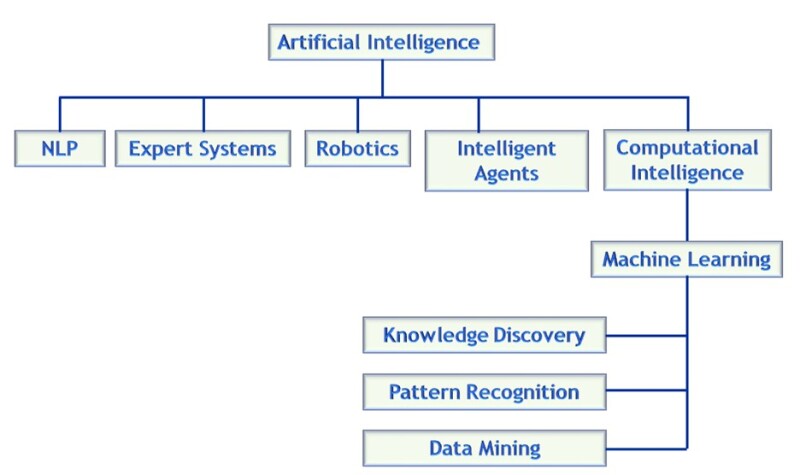Artificial intelligence (AI) is transforming the way we live, work, and interact. From our personal lifestyles through our social engagements to the way we conduct our private and corporate businesses, AI is altering our methodologies and changing the landscape of end products. From the age-old medical expert systems and intelligent search engines to intelligent chatbots and predictive models, the enthusiasm for AI practice is growing rapidly. This article starts with a brief overview of AI, the key elements, and its recent advancements. It concludes with a few suggestions for getting started. This will help enthusiastic readers take strategic steps toward getting involved in the process and contributing to the digital transformation efforts in the oil and gas industry.
The Basic Elements
One of the simplest and most straightforward definitions of AI was presented by John McCarthy, a professor of computer science at Stanford University, as “the science and engineering of making intelligent systems.” The intelligent systems could be in the form of software, hardware, or a combination of both (Fig. 1).
The key elements of AI include:
- Natural language processing (NLP)
- Expert systems
- Robotics
- Intelligent agents
- Computational intelligence

Natural Language Processing
NLP is a branch of AI that allows machines to use and understand human language. It is built into products such as automatic language translators used in multilingual conferences, text-to-speech translation, speech-to-text translation, and knowledge extraction from text. This technology is used to scan data in the form of raw language such as handwriting, voice, and images into contextually relevant structures and relationships that can easily be integrated with other structured data for more efficient analysis in subsequent processes. Unstructured data are rarely used since they were originally meant only for use by humans. Hence, there is a need to utilize, understand, and unlock the vast wealth of valuable information hidden in them. Recent applications of NLP in the oil and gas industry include:
- Extracting structured data from free text embedded in drilling, well planning, PVT laboratory, safety, and mineral mine failure summary reports
- Extracting information from plant equipment reports as input to systems that automatically place orders for parts to fix or replace
- Extracting information from the details of production, which can be used to improve operational efficiency
- Interacting with machines to troubleshoot unexpected problems in a timely and accurate manner
The above-mentioned applications can make maintenance work safer and easier, in addition to significantly reducing asset downtime due to unforeseen circumstances.
Expert Systems
Expert systems are machines or software applications that provide explanation and advice to users through a set of rules provided by an expert. The rules are programmed into software to reproduce the knowledge for nonexperts to solve a range of actual problems. Examples of this are found in the fields of medicine, pharmacy, law, food science, and engineering, and maintenance. In the oil and gas industry, expert systems have been used from exploration through production, from research through operations, and from training through fault diagnosis.
Examples of expert system applications in the oil and gas industry include:
- Dipmeter interpretation to translate tadpoles into strata and formations
- Electrofacies determination
- Reservoir characterization
- Blowout prevention
- Drilling fluid selection
- Lead finder: to estimate probability of exploratory drilling success using neighboring borehole histories
- Pipe sticking advisor: to provide guidelines on why drill strings get stuck and how to free them
- Configuring wellheads assemblies for production wells
- Drilling planner to advise on choosing drilling bits and their speed of rotation, mud weight, and geosteering based on geological information
- Drilling monitoring of rate of penetration, drill cuttings transitions, and early warning for drilling incidences.
Robotics
Intelligent robots are mechanical structures in various shapes that are programmed to perform specific tasks based on human instructions. Depending on the environment of use (land, air, and sea), they are called drones and rovers. In the petroleum industry, they have been used in innovative and beneficial ways: in production; to connect different segments of drill pipes during drilling, in underwater welding to conduct underwater maintenance and repair tasks; in exploration to map outcrops for building digital models for geologists; and in field operations to inspect remote sites and challenging terrains that are potentially dangerous for humans to navigate.
Some of the benefits derived from the use of robots in the oil and gas industry include improving safety, increasing productivity, automating repetitive tasks, and reducing operational costs by diminishing downtime.
Intelligent Agents
Multi-agent systems (MAS) is a subfield of AI that builds computational systems capable of making decisions and take actions autonomously. These systems are capable of maintaining information about their environment and making decisions based on their perception about the state of the environment, their past experiences, and their objectives. Agents can also interface with other agents to collaborate on common goals. They emulate human social behavior by sharing partial views of a problem, enabling collaboration, and cooperating with other agents to make appropriate and timely decisions to reach desired objectives. Agents have been implemented successfully, mostly in the manufacturing industries, and are proven to have potential benefits in the petroleum industry. Uses of MAS include:
- Managing supply chain
- Addressing various production- and maintenance-related tasks
- Processing and managing the distributed nature of the oil and gas business
- Verifying, validating, and securing data streams in complex process pipelines
- Getting insights from data to increase operational efficiency
- Scheduling maintenance
- Preventing theft and fraud
Still, the application of MAS in the oil and gas industry is yet to gain the expected popularity. A smart integration of MAS with machine learning (ML) can bring many more benefits for the development of the industry.
Computational Intelligence
Computational Intelligence is the computational aspect of AI that focuses on utilizing and deriving value from data. It uses the knowledge-discovery and data-mining processes to develop ML workflows to learn from historical data and predict future events. There are several algorithms designed to build ML models. Examples are artificial neural networks, decision trees, random forests, support vector machines, extreme learning machines, fuzzy logic types I and II, adaptive neuro fuzzy inference systems (popularly known as ANFIS), Gaussian-process regression, Bayesian belief network, and K-nearest neighbor. Data science can be defined as the new and continuously evolving field that uses various scientific methods, processes, algorithms, and systems to extract knowledge, patterns, or insights from data.
Supervised Machine Learning
Supervised ML algorithms learn patterns from historical examples (called training data) to generate the outcome of future events. It involves building and training a model for a specific application using a set of input data with their corresponding target values. The model is able to predict outcomes for new inputs after sufficient training. An example is to build a relationship between wireline logs as input and a specific reservoir property (such as porosity) from historical data to predict the porosity values for a new or uncored well. Typical applications of this method are regression and classification.
Unsupervised Machine Learning
In contrast to supervised, unsupervised ML algorithms make inferences from events without prior classification or labels. They infer a function, usually based on some distance metric, to discover a hidden structure from unlabeled data. An expert can thus derive meanings that lead to new insights. An example is to use historical wireline log data to compartmentalize a reservoir into zones based on the density of the data points. An expert may then interpret the sections as different lithologies. A typical application of this is clustering.
Hybrid Machine Learning
Hybrid or mixed ML algorithms combine supervised and unsupervised methods to solve a problem especially where there are uncertainties in human knowledge. Either one could come first. A typical application could start with supervised learning and the predicted output could then be clustered to reveal certain hidden patterns. Another application could start by assigning clusters to an input data to generate an output that will form the basis for a new prediction to achieve a supervised learning objective.
Generally, the main challenge of ML is to maintain a delicate balance between underfitting (low variance with high bias) and overfitting (high variance with low bias). This is the core of the optimization process.
Beyond the Basics
Beyond the traditional supervised ML algorithms, there are recent advancements in learning methodologies that could be applied to more complex and challenging problems to increase the predictive performance. Such advances include hybrid, ensemble, and deep-learning methodologies.
Kick-Starting a Career in Artificial Intelligence
Getting started with a new venture involves two major steps: acquiring knowledge and applying the knowledge through practical implementation. Some of the basic requirements to learn AI include a knowledge in statistics, probability theory, mathematics (linear/non-linear algebra), and programming. The first step to practicing AI is to take relevant courses. Available learning platforms include Udemy, Coursera, Edx, and Springboard. It is strongly recommended to lay hands on practical applications to solidify the foundational training in these courses.
Investing in relevant books on probability, statistics, mathematics, and coding would complement the courses. Working on as many projects as possible and collaborating with other AI enthusiasts would help to accelerate the learning curve. Participating in ML competitions, hackathons, and datathons could also help. The feedback received from such activities and the networking opportunities they create with experts could help you build relationships as well as skills. Examples of such competition platforms are Kaggle, KDD, DrivenData, Numerai, Zindi, AICrowd, KackerEarth, Grand-Challenge, OpenML, and Open Data Science.
To summarize
- AI, along with other technologies, sprang from the emergence of the fourth industrial revolution.
- AI technologies are here to stay and have become part of our personal lives and business processes.
- Industries, including oil and gas, are already experiencing transformation.
- There are still challenges to be addressed with more research, innovative thinking, and collaborative efforts.
- Starting with AI and any of its elements is not difficult. The journey of a thousand miles starts with one bold step. Training, followed by practical implementation, will help make your journey from an enthusiast to expert easy.
References and further reading
Barrington, IL. 2015. Expert System Enhances Its Commitments in the Oil & Gas Industry.
Gillen, S. and Rosner, M., 2017. Natural Language Processing: Why the Wind Industry Needs It, Sparkcognition, February 16, 2017.
Nayat Sanchez-Pi, Luiz Andre Paes Leme, and Ana Cristina Bicharra Garcia, Intelligent Agents for Alarm Management in Petroleum Ambient, Journal of Intelligent & Fuzzy Systems, Volume 1, pp. 1–11, 2014.
Sam Tabahriti. Robotics in Oil & Gas.
What is Computational Intelligence? https://cis.ieee.org/about/what-is-ci
[The article was sourced from the author by TWA editor Jaspreet Singh Sachdeva.]


